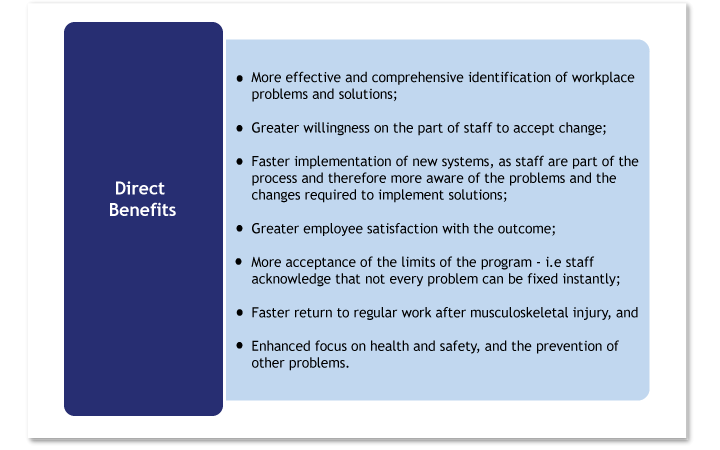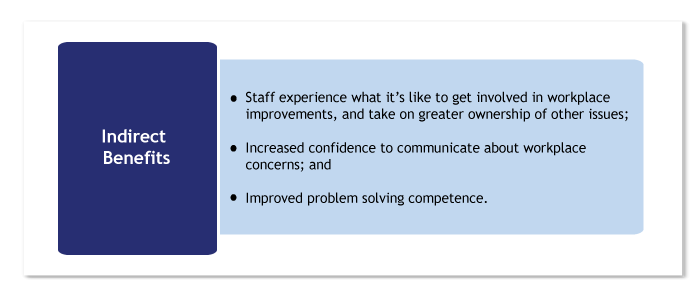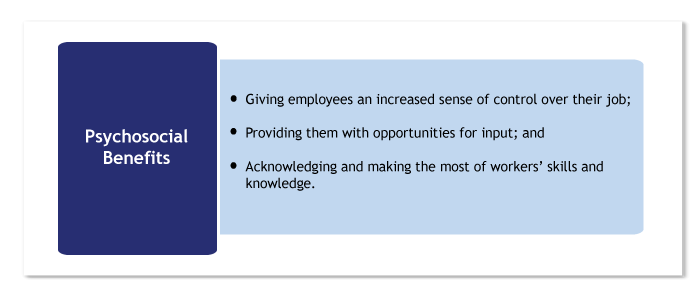| Show/Hide Hidden Text |
It gives senior managers the opportunity to contribute to the organisation's well being Participatory ergonomics programs give employees the opportunity to be involved in job improvements and thus address potential negative psychosocial factors |
Participatory ergonomics requires the discussion and evaluation of ideas and for this reason the process is slower than if one person were to call all the shots. Staff need to be informed about the process, input sought, and feedback given. |
While the issues addressed by participatory ergonomics programs are common problems in many organisations, implementation of this type of program is uncommon. This offers the RTW coordinator the opportunity to create real and positive change within an organisation. The same opportunity is available to senior managers with the vision and commitment to contribute to the organisation's well being. |
The direct benefits include:

The indirect benefits include:

The psychosocial benefits…

Participatory ergonomics addresses the physical AND psychosocial factors that contribute to musculoskeletal conditions.
Participatory ergonomics programs give employees the opportunity to be involved in job improvements and therefore address potential negative psychosocial factors.
Some say the benefits of participatory ergonomics result more from participation in the program than the ergonomic changes.
Enhancing an employee's sense of their importance within the organisation alters their beliefs and attitudes. People who feel looked after are more likely to respond in kind. Many practitioners consider the dramatic drop in Repetitive Strain Injury (RSI) in Australia in the 80s came about in large part through improvements in employee sense of the care provided by the employer.
![]()